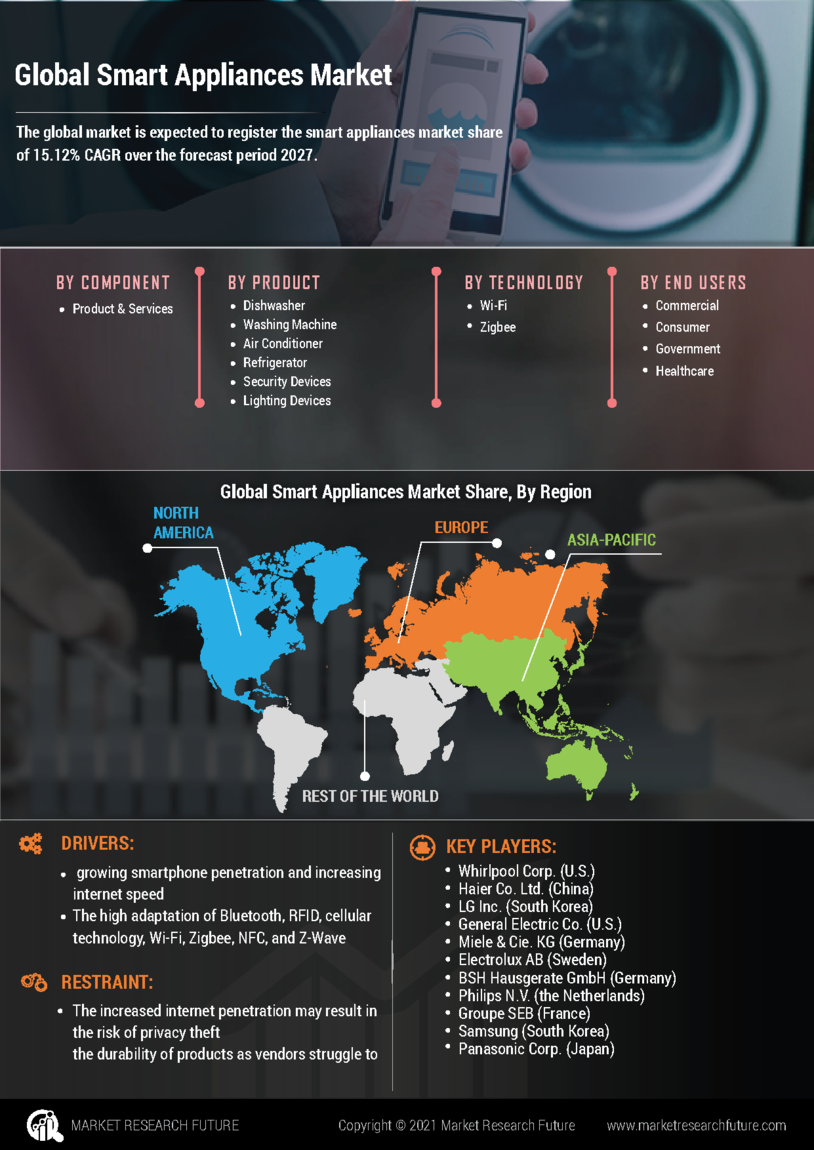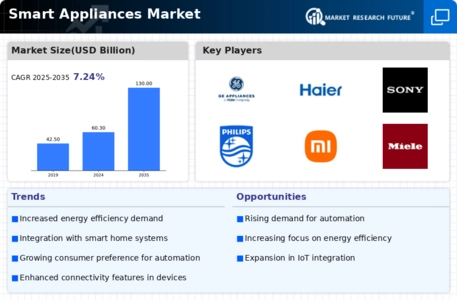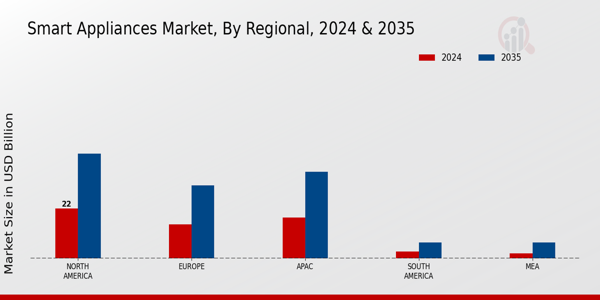Smart Appliances Market Summary
As per Market Research Future Analysis, the Smart Appliances Market was valued at 56.21 USD Billion in 2023 and is projected to grow to 130 USD Billion by 2035, reflecting a CAGR of 7.24% from 2025 to 2035. The market is driven by increasing consumer demand for convenience, energy efficiency, and the integration of IoT technology in appliances. Key players are innovating to meet evolving consumer preferences, focusing on sustainability and enhanced user experiences.
Key Market Trends & Highlights
The Smart Appliances Market is experiencing transformative trends driven by technology and consumer preferences.
- Market size in 2024: 60.28 USD Billion; projected to reach 130 USD Billion by 2035.
- Smart Refrigerators segment projected to grow to 30.0 USD Billion by 2035.
- Smart Ovens expected to reach 20.0 USD Billion by 2035, driven by automated cooking features.
- Smart Home Security Systems anticipated to grow to 37.0 USD Billion by 2035, reflecting increased consumer safety concerns.
Market Size & Forecast
| 2023 Market Size | USD 56.21 Billion |
| 2024 Market Size | USD 60.28 Billion |
| 2035 Market Size | USD 130 Billion |
| CAGR (2025-2035) | 7.24% |
Major Players
Key players include Whirlpool Corporation, Panasonic, GE Appliances, Philips, Apple, Electrolux, Sony, Haier, Samsung Electronics, Siemens, TCL Technology, Honeywell, Miele, Bosch, and LG Electronics.











